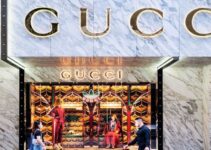H&M (Hennes and Mauritz AB) is a Swedish retail clothing and fast-fashion multinational company. Erling Persson founded the retail fast-fashion clothing company in 1947. Today, we’ll discuss Porter’s five forces analysis of H&M; bargaining power of suppliers and buyers; threat of new entrants and substitutes; and intense rivalry as competitive forces in strategic management.
Supply Chain Factors of H&M
- Network of 547 suppliers
- Large clothes manufacturing factories are in China and Bangladesh
- 1.4 million employees in the company’s supplier’s factories
- 40% of the company’s supplier factors have trade unions
- Network of 1027 factories
Porter’s five forces analysis of H&M would analyze the bargaining power of suppliers and buyers; the threat of new entrants and substitutes; and intense rivalry as competitive forces in strategic management. Here’s H&M Porter’s five forces analysis of retail clothing fashion business as follows;
Porter’s Five Forces Analysis of H&M
Let’s discuss Porter’s five forces analysis of H&M as competitive forces in strategic management and they’re as follows;
Bargaining Power of Suppliers in H&M
The bargaining of suppliers is low in H&M as competitive forces in strategic management. Some of the main factors impacting the bargaining power of suppliers in H&M Porter’s five forces analysis of the retail clothing fashion business are as follows;
I-Production Material and Supplies
H&M needs the following tools, equipment, materials, and supplies for the production of retail fast-fashion clothes;
- Cutting and sewing
- Garments dying and washing
- Trimming
- Fabric dying and printing
- Knitting and weaving
- Yarn and spinner
- Fabric producer
- Recycling
- Raw cotton
II-More Suppliers
The production supplies, tools, material, and their suppliers are easily and conveniently available in various countries. In fact, there are more suppliers than production factories; which decreases their bargaining power. They prefer to work with the world’s leading brands like H&M and build long-term relationships with them; because it allows them to have a smooth supply of orders.
III-Suppliers Regulations
In order to regulate suppliers and ensure ethical practices in their supplier factories; H&M has set up clear rules and regulations. It allows the clothing brand to ensure quality products and protect the interests of workers in their 3rd world countries. In case of non-compliance with the company’s regulations, H&M would immediately break the contract and build relationships with other suppliers.
Bargaining Power of Buyers in H&M
The bargaining of Buyers is Higher in the retail clothing fashion business as competitive forces in strategic management. Some of the main factors impacting the bargaining power of suppliers in the retail clothing fashion business five forces analysis of H&M are as follows;
I-Alternative Clothing Brands
There are multiple fast-fashion clothing brands operating their business in the market. They all offer unique designs and styles for customers in different price ranges. Customers have multiple options for buying different types of clothes in every category; casual, formal, or informal.
II-Price Sensitivity
The consumer market is highly cautious about the price. They would easily switch to the other brand if their favorite is charging more price than the competitors. Companies need to maintain competitive pricing for their products.
III-Brand & Standardization
In order to gain a competitive edge; H&M and other brands focuses on offering high-quality products for the customers. They invest a significant amount of resources in marketing and branding for product promotion to differentiate themselves from the competitors.
Threat of New Entrants in H&M
The threat of new entrants is low in the retail clothing fashion business and H&M is a competitive force in strategic management. Some of the main factors impacting the threat of new entrants in H&M Porter’s five forces analysis of the retail clothing fashion business are as follows;
I-Mass Scale
In order to achieve profitability and cost competitive edge, the new firm needs to conduct production and manufacturing operations at a mass scale. They don’t have the professional expertise, heavy capital investment, business influence, and supply chain network to immediately start production at the mass scale.
II-Brand Loyalty
Along with capital investment and professional expertise, H&M invests a significant amount of capital resources in marketing. It has allowed them to establish a network of retail stores and a loyal database of customers in various countries worldwide. They have been able to do so by providing quality service and unique designs for decades.
Threat of Substitutes to H&M
The threat of substitute products and brands is higher in the H&M as competitive forces in strategic management. Some of the main factors impacting the threat of new substitutes in H&M Porter’s five forces analysis of the retail clothing fashion business are as follows;
I-Multiple Alternative
While shopping apparel and fashion clothing, customers have multiple alternative brand options in various categories; men, women, and children. There are also multiple brands offering retail fashion clothing in premium and affordable price ranges. The customer would choose the fashion clothing brand relevant to their budget limits; it amplifies the substitution rate.
II-New Shopping Trends
Along with brand alternatives, technological development has offered customers online shopping options. Customers could choose and check various types of fashion styles of different brands, and order them online without actually visiting the store.
Competitive Rivalry in H&M
The competitive rivalry among retail clothing fashion companies is very high in H&M as a competitive forces in strategic management. Some of the main factors impacting competitive rivalry in the retail clothing fashion business five forces analysis of H&M are as follows;
I-Tough Competition
H&M has to face tough competition from competitive brands like Zara, Gucci, Mango, Uniqlo, PVH, Gap, and others. They all are the world’s leading brands in the retail fashion clothing industry, and their market presence has made it highly difficult for the retail brand to maintain its market share and brand positioning. In fact, the fast-fashion brand needs to develop new styles and designs to keep up with the growing fashion trends of the market.
Conclusion: H&M Porter’s Five Forces Analysis |5 Forces Analysis of H&M
After an in-depth study of Porter’s five forces analysis of H&M; we have realized that H&M is the world’s leading fast-fashion clothing multinational brand. If you are learning about the H&M five forces analysis of the retail clothing fashion business; then you should keep in mind the abovementioned bargaining power of suppliers and buyers; threat of new entrants and substitutes; and intense rivalry as competitive forces in strategic management.

Ahsan is an accomplished researcher and has a deep insight in worldly life affairs. He goes Live 3 days a week on various social media platforms. Other than research writing, he’s a very interesting person.


